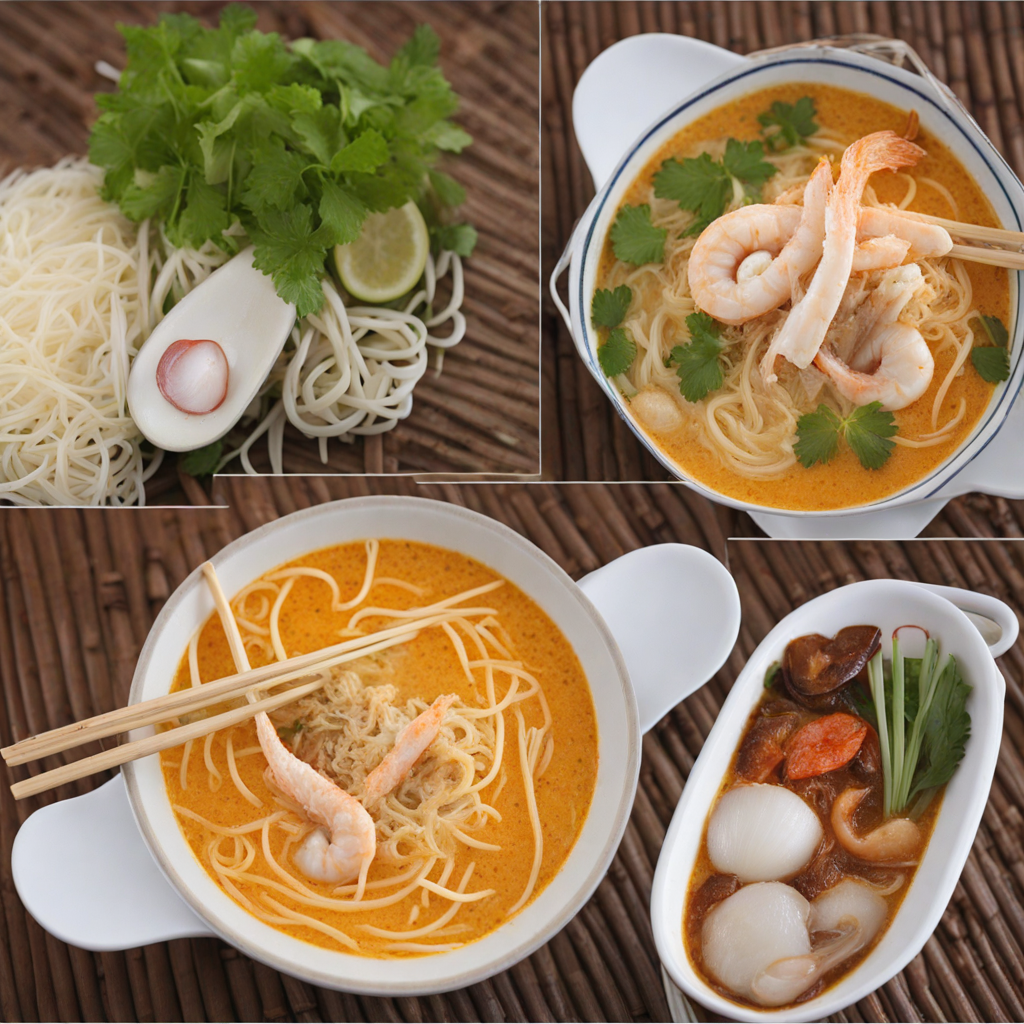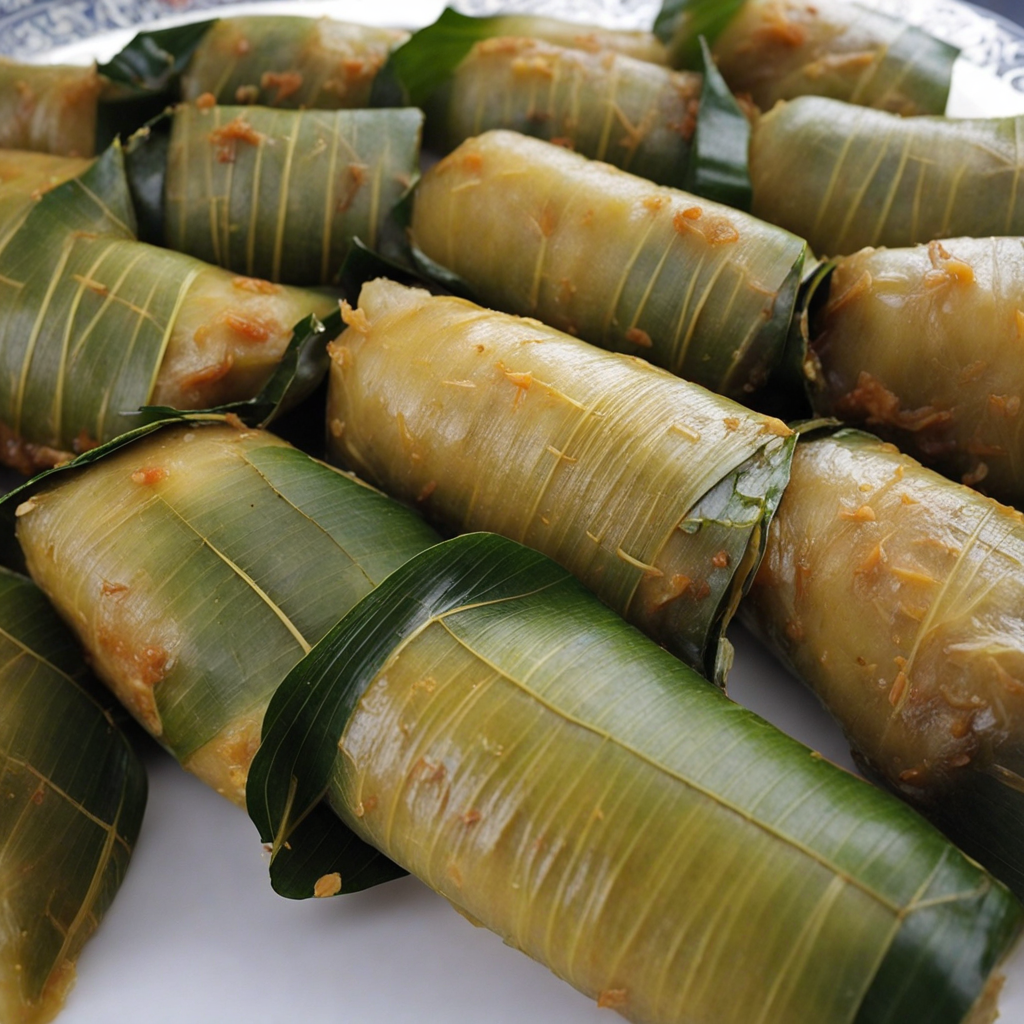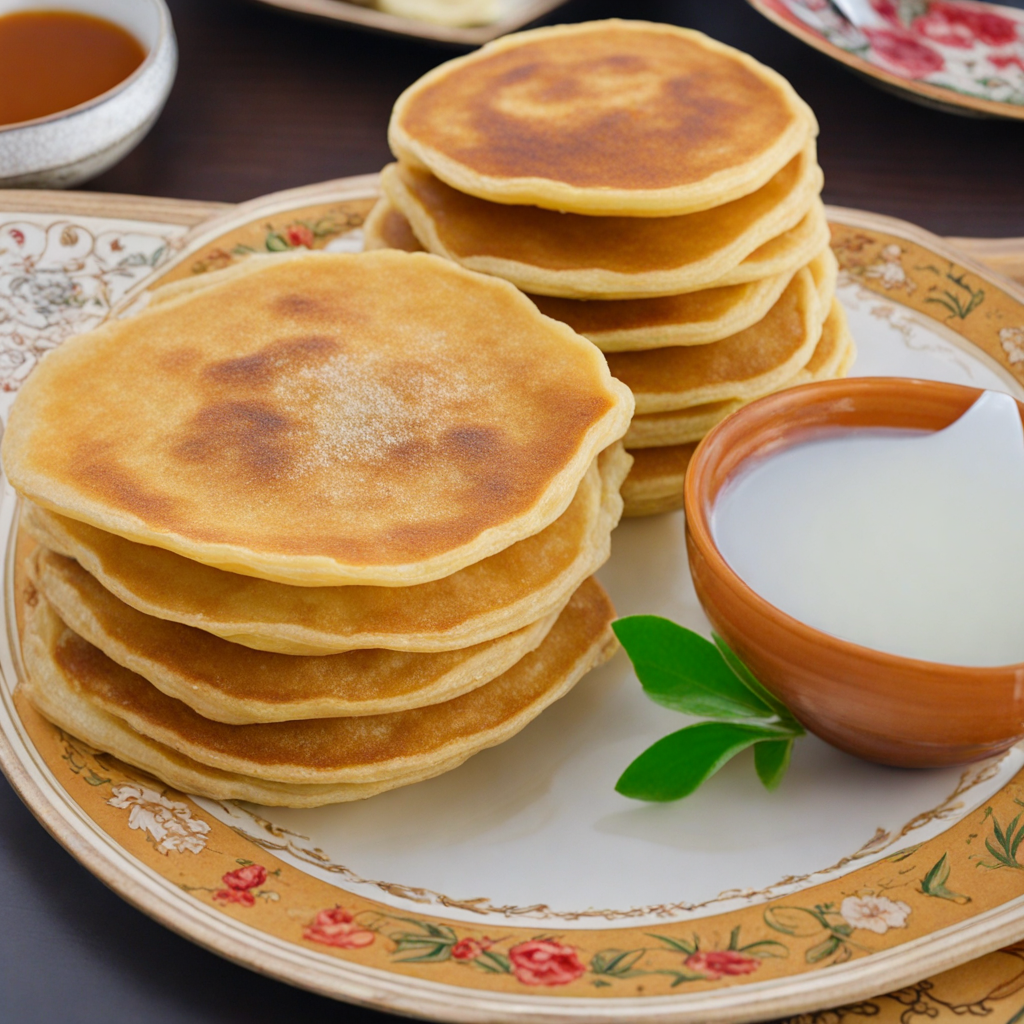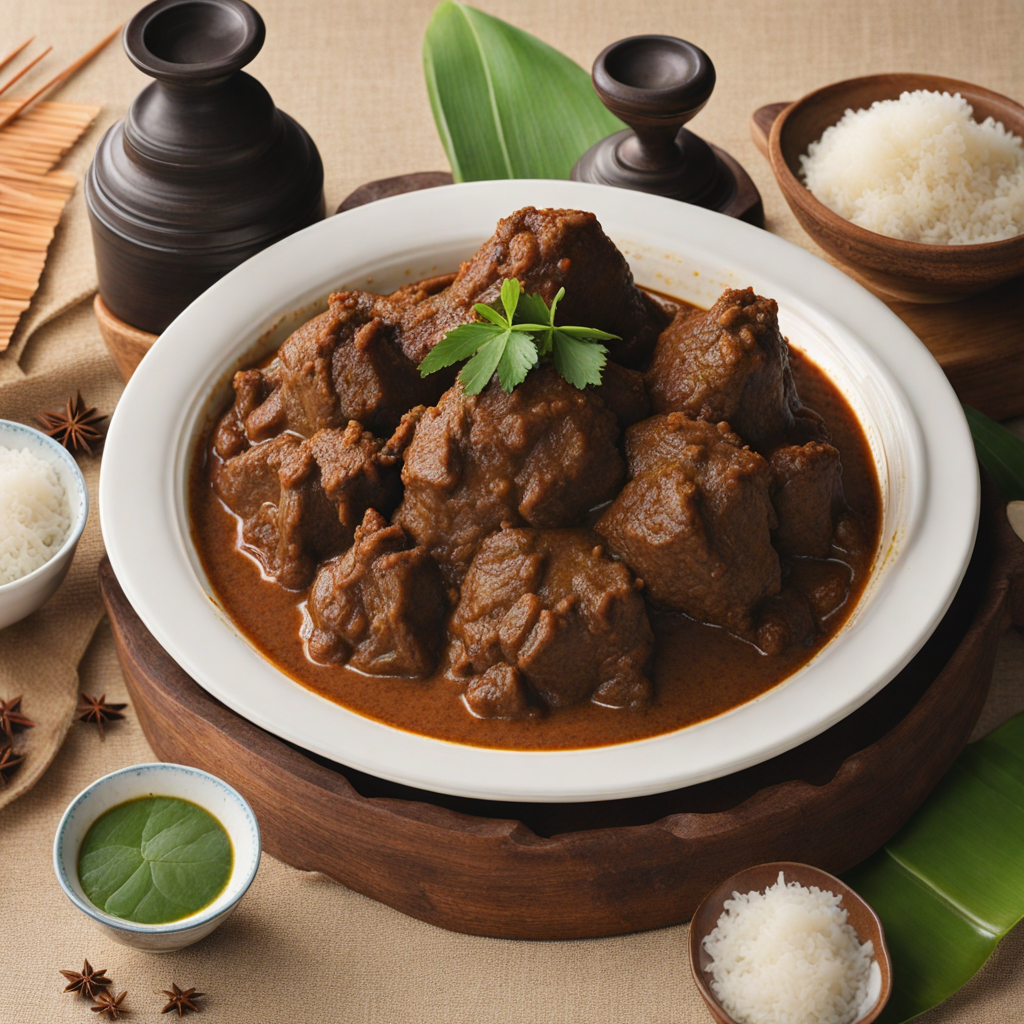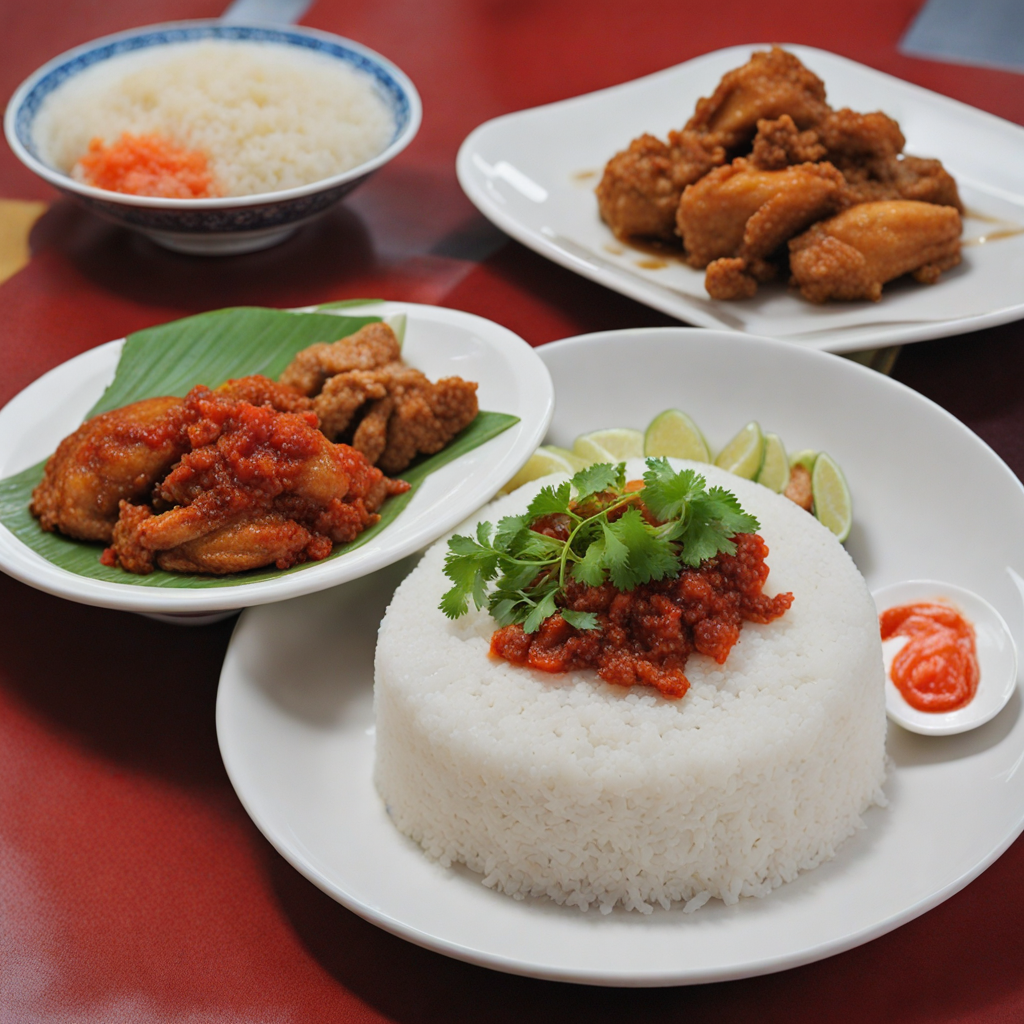Laksa Brunei
Laksa Brunei is a delightful and aromatic noodle soup that embodies the rich culinary heritage of Brunei. This dish features a tantalizing combination of rice vermicelli noodles served in a spicy, coconut milk-based broth that is both creamy and fragrant. The broth is crafted with an array of spices, including lemongrass, turmeric, and galangal, providing a warm and inviting flavor profile that dances on the palate. Each spoonful is a harmonious blend of heat and richness, making it a comforting meal for any occasion. The toppings of Laksa Brunei enhance its allure, often featuring succulent pieces of chicken, prawns, or fish, which are simmered to perfection, allowing them to absorb the fragrant broth. The dish is typically garnished with fresh herbs like cilantro and mint, as well as slices of boiled eggs, bean sprouts, and a squeeze of lime, adding layers of texture and freshness. This combination of ingredients not only adds visual appeal but also elevates the overall taste experience, creating a well-rounded meal that balances spice, creaminess, and zest. One of the most enticing aspects of Laksa Brunei is its ability to cater to diverse palates, as spice levels can be adjusted to suit individual preferences. This dish is often enjoyed as a street food favorite in Brunei, bringing together communities and showcasing the country’s love for bold flavors and hearty meals. Each bowl of Laksa Brunei tells a story of tradition, culture, and warmth, making it a must-try for anyone seeking to explore the unique tastes of Brunei’s culinary landscape.
How It Became This Dish
The Rich History of Laksam Brunei Laksam Brunei, a beloved dish in Bruneian cuisine, is a culinary gem that reflects the nation's rich cultural tapestry and its historical ties to the broader Malay Archipelago. To understand Laksam Brunei, it is essential to delve into its origins, cultural significance, and the development of this dish over time. #### Origins of Laksam Laksam, a dish that is believed to have originated from the Malay Peninsula, is a type of rice noodle served with a rich and creamy coconut-based gravy. While its exact origins are difficult to pinpoint due to the fluid nature of food traditions in Southeast Asia, it is widely accepted that Laksam has its roots in the culinary practices of the Malay people. The name 'Laksam' itself is derived from the Malay word 'laksa,' which refers to a variety of spicy noodle soups. In Brunei, Laksam has evolved into a unique version that showcases local ingredients and flavors. The dish typically consists of thick rice noodles, which are made from rice flour and water, and a luscious gravy made from coconut milk, fish (often mackerel), and a blend of spices. The use of fish in the gravy is notable, as it highlights Brunei's fishing heritage and the abundance of marine resources in the region. #### Cultural Significance Laksam Brunei is more than just a dish; it plays a vital role in the cultural practices and traditions of the Bruneian people. Food in Brunei is deeply intertwined with social gatherings, celebrations, and communal events. Laksam is often served during festive occasions, family gatherings, and traditional ceremonies, symbolizing unity and hospitality. The dish is particularly significant during the month of Ramadan, when families come together to break their fast. The preparation of Laksam is often a communal activity, involving multiple generations of family members. This collaborative approach to cooking reinforces social bonds and passes down culinary knowledge, ensuring that the tradition of making Laksam is preserved for future generations. Furthermore, Laksam serves as a canvas for expressing Brunei's cultural identity. With its blend of local ingredients, spices, and cooking techniques, the dish encapsulates the essence of Bruneian cuisine, which is characterized by the use of fresh, natural ingredients and the influence of Malay, Chinese, and Indian culinary practices. #### Development Over Time The history of Laksam Brunei is one of adaptation and evolution. As Brunei has interacted with various cultures over the centuries—due to trade, colonization, and migration—its cuisine has absorbed influences that have shaped dishes like Laksam. In its early iterations, Laksam might have been a simpler dish, primarily consisting of rice noodles and a basic fish gravy. However, as culinary exchanges occurred, particularly during the trade between the Malay Archipelago and other regions such as China and India, new ingredients and techniques began to enrich the dish. The introduction of coconut milk, for instance, is believed to have been influenced by Indian and Southeast Asian cooking, adding a creamy texture and a depth of flavor that has become synonymous with Laksam Brunei today. In the late 20th and early 21st centuries, the globalization of food culture has further transformed Laksam. While traditional recipes remain cherished, modern interpretations have emerged, incorporating contemporary ingredients and presentation styles. Chefs and home cooks alike experiment with variations, adding elements like herbs, chili, and even fusion ingredients to cater to evolving palates. Despite these changes, the essence of Laksam as a comforting, communal dish remains intact. #### Regional Variations While Laksam is a staple in Brunei, it is important to note that variations of this dish exist across the Malay Peninsula and beyond. In Malaysia, for example, Laksam is prepared with a thicker sauce and often served with a side of ulam (fresh vegetables) and sambal. In contrast, Singapore's laksa features a spicier, more aromatic soup base. Each region's adaptation of Laksam reflects local tastes, available ingredients, and cultural preferences, highlighting the dish's versatility. However, what sets Laksam Brunei apart is its unique preparation methods and the emphasis on local fish, often mackerel or sardines, which are abundant in Brunei's waters. The use of pandan leaves for flavoring the gravy and the incorporation of local herbs further distinguish Bruneian Laksam from its regional counterparts. #### Contemporary Appreciation Today, Laksam Brunei is celebrated not only as a traditional dish but also as a symbol of national pride. It has found its way into the menus of restaurants and eateries across the country, where it is enjoyed by both locals and tourists. Food festivals, especially those that highlight Bruneian cuisine, often feature Laksam as a star attraction, allowing chefs to showcase their creativity while honoring the dish's heritage. The rise of social media has also played a significant role in the contemporary appreciation of Laksam. Food bloggers and influencers share their experiences with Laksam, promoting its flavors and cultural significance to a global audience. This visibility has sparked interest in Bruneian cuisine as a whole, encouraging culinary tourism and a newfound respect for the traditions that have shaped the nation's food landscape. #### Conclusion Laksam Brunei stands as a testament to the rich culinary heritage of Brunei and the broader Malay culture. Its evolution from humble beginnings to a cherished dish reflects the dynamic interplay of tradition and innovation. As Bruneians continue to celebrate and adapt Laksam, they not only preserve a vital part of their cultural identity but also invite others to join in the experience of sharing a meal that embodies the spirit of togetherness and community. In a world that is ever-changing, Laksam Brunei remains a delicious reminder of the past, a reflection of the present, and a promise for the future—one bowl of creamy goodness at a time.
You may like
Discover local flavors from Brunei


